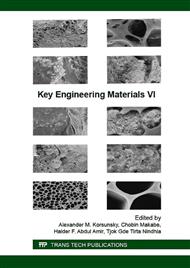p.204
p.209
p.214
p.219
p.227
p.233
p.240
p.245
p.250
Comparative Study of Drilling Induced Delamination in CFRP with Different Ply Orientation
Abstract:
Composite laminates are used in many applications in industries like aerospace and aircraft due to their extremely high strength to weight ratio and corrosion resistance properties. The composite laminates are difficult to machine materials, which results into low drilling efficiency and drilling-induced delamination, thus it is important to develop a suitable CFRP material with different ply orientation to overcome the difficulties related in machining of composite materials. The focus of present work presents a comparative study involving experimental characterization with different ply orientation to understand the effect of cutting parameters on the thrust force, delamination extent and exit hole diameter during conventional drilling of carbon fiber reinforced polymer. Processing parameters such as, feed rate plays dominant role in delamination than spindle speed in both ply orientation. The analysis shows that conventional drilling with [0/90]16 ply yields lower delamination and hole size variation than [(0/45/90/-45)]4s ply orientation.
Info:
Periodical:
Pages:
227-232
Citation:
Online since:
August 2016
Authors:
Keywords:
Price:
Сopyright:
© 2016 Trans Tech Publications Ltd. All Rights Reserved
Share:
Citation:


